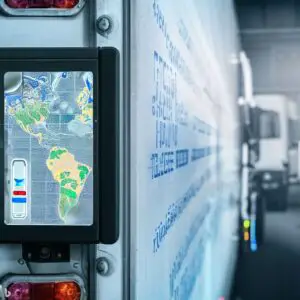Pharmaceutical shipping is an important step in the drug development process. It allows for the safe and secure delivery of essential drugs, medicines, and other medical products to their destination. As such, pharmaceutical shipping must be conducted with precision and accuracy in order to ensure that all products arrive intact and on time. This article will provide an overview of the various aspects of pharmaceutical shipping, from packaging considerations to regulatory compliance.
Packaging Strategies
The packaging strategies employed in pharmaceutical shipping are critical for the safe and effective delivery of products. It is essential that appropriate packaging materials are used to protect the contents from damage, spoilage, and theft during transport. In addition, labeling requirements must be met to ensure that any legal or regulatory requirements are adhered to.
The selection of appropriate packaging materials is an important factor in ensuring that the contents arrive safely at their destination. This includes selecting suitable boxes or crates, foam inserts, bubble wrap and other protective materials as needed. Packages should also be properly sealed with adhesive tape in order to prevent tampering or accidental opening during shipment.
Labeling requirements must also be taken into account when shipping pharmaceuticals. This includes including all relevant information such as a product description, net weight and volume of the product, manufacturer’s name and address and storage instructions. All labels should meet applicable regulations and should include warnings if required by law.
It is therefore essential that due care is taken when selecting packaging materials for pharmaceuticals and ensuring that all labeling requirements are met prior to shipment. Doing so will help ensure that the products arrive safely at their destination without any delays or complications caused by improper packaging or labeling practices.
Temperature Control
 Temperature control is a critical factor in the pharmaceutical shipping process. In order to ensure that products arrive at their destination intact, it is essential to maintain storage conditions throughout the distribution chain. Temperature fluctuations and extreme temperatures can have detrimental effects on the integrity of the product, leading to loss of potency or complete spoilage. It is therefore important that those involved in the pharmaceutical shipping process understand how temperature affects drug stability and use appropriate methods to maintain safe storage conditions.
Temperature control is a critical factor in the pharmaceutical shipping process. In order to ensure that products arrive at their destination intact, it is essential to maintain storage conditions throughout the distribution chain. Temperature fluctuations and extreme temperatures can have detrimental effects on the integrity of the product, leading to loss of potency or complete spoilage. It is therefore important that those involved in the pharmaceutical shipping process understand how temperature affects drug stability and use appropriate methods to maintain safe storage conditions.
Temperature-controlled packaging solutions such as insulated containers and gel packs are available for transporting temperature-sensitive drugs. These packages are designed to maintain consistent temperatures during transit and protect against sudden changes in temperature due to environmental factors such as extreme heat or cold. Additionally, they can be used with other forms of packaging, such as bubble wrap or polystyrene foam, for optimal protection.
The selection of pharmaceutical shipping containers should be based on a variety of factors including product type, desired temperature range, and end-use environment. For example, if an item needs to remain at room temperature during transport but then stored at refrigerated temperatures upon arrival at its destination, a container with a thermal cooling system would be required. Containers should also be inspected for signs of wear or damage before use to ensure that they will provide an adequate level of protection from external elements such as moisture and air pressure.
It is essential that those responsible for handling temperature-sensitive products adhere to established protocols for proper storage conditions throughout the distribution chain. Doing so will help minimize risk of spoilage and ensure that products arrive safely at their intended destination.
Shipping Security
The security of pharmaceutical shipping is of the utmost importance, as mishandling and improper management of these goods can lead to significant consequences. Records management and insurance coverage are two important considerations when it comes to ensuring that shipments are secure. Records management requires tracking the shipment from origin to destination and keeping records on any changes in storage or handling of the product. In addition, it involves making sure that all relevant paperwork is completed accurately and on time. Insurance coverage ensures that even if a shipment does not arrive at its destination in perfect condition, any financial losses incurred by the sender or receiver are covered.
The packaging used for pharmaceutical shipments also plays an important role in maintaining the security of these goods. This includes making sure that items are adequately insulated from extreme temperature variations, moisture, sunlight, or any other environmental factors which may have an adverse effect on the product. The boxes used should also provide adequate cushioning and be strong enough to protect against physical damage during transit. Proper labeling and documentation must also be included so that goods can be identified upon arrival at their final destination.
To further ensure the security and safety of pharmaceutical shipments, a number of additional measures may be taken by shippers and receivers. These include using specialized carriers with temperature-controlled trucks or containers; employing GPS tracking devices; performing regular inspections; utilizing tamper-evident seals; conducting background checks on employees involved in handling shipments; and providing recipients with detailed instructions on how to handle deliveries upon arrival. All these steps should be taken to ensure that shipments remain safe throughout their journey from point A to point B.
By taking into account all aspects related to shipping security – such as records management, insurance coverage, packaging materials, additional measures – companies can ensure that their pharmaceutical goods arrive safely at their intended destinations without incident or compromise of quality.
Regulatory Requirements
The regulatory requirements for pharmaceutical shipping are stringent and must be strictly adhered to in order to ensure the safe delivery of medicines. Compliance with these standards is essential, as it ensures that all shipments meet safety and quality criteria.
To ensure compliance, digital tracking systems are used by shippers to monitor and document the progress of a shipment. This system involves tagging each shipment with a unique identifier which can be tracked at each stage of its journey. This allows shippers to keep an audit trail of their products, ensuring that they have followed all necessary steps in the transportation process.
Furthermore, digital tracking enables shippers to track any changes that occur during transport and take corrective action if necessary. By using this system, shippers can quickly identify any problems before they become serious enough to cause disruption or damage to the shipment. As such, this system provides additional assurance that shipments will reach their destinations in a timely manner and within compliance standards.
In addition, digital tracking also helps shippers maintain accurate records for reporting purposes, allowing them to provide detailed information about their activities if required by authorities or other regulatory bodies. Overall, digital tracking is an important tool for helping pharmaceutical companies maintain compliance with regulatory requirements and ensure the safe delivery of medicines.
Risk Assessment
 The risk assessment of pharmaceutical shipping is an important factor in determining the safety of a shipment. This process involves the evaluation of hazards and risks associated with each step along the transport chain. Through proper risk management, cost optimization can be achieved while ensuring that all relevant safety regulations are met.
The risk assessment of pharmaceutical shipping is an important factor in determining the safety of a shipment. This process involves the evaluation of hazards and risks associated with each step along the transport chain. Through proper risk management, cost optimization can be achieved while ensuring that all relevant safety regulations are met.
The risk assessment should begin with an analysis of the source and destination of the shipment, followed by a review of the transport route and any potential risks associated with it. This should include close consideration of any environmental or geographical factors that may present hazards to the shipment such as extreme temperatures, rough terrain, or long distances. Any applicable local, state, or national regulations should also be considered when selecting a transport route.
An evaluation of the packaging and labeling requirements for each type of shipment is also necessary to ensure that all relevant regulations are met. The material used and method employed for packing must be appropriate for safeguarding the product from any external threats and damage during transit. Furthermore, any applicable labeling requirements must also be taken into account to ensure that information about contents, handling instructions, and hazardous materials are clearly indicated on the package.
Finally, considerations must be made for insurance coverage against any losses incurred during transportation. All carriers must have sufficient insurance coverage in place to protect against any financial losses due to accidents or theft during transit. Additionally, additional insurance coverage may need to be purchased depending on the value and type of goods being transported. Risk management strategies such as these can help optimize costs while still providing a safe shipping process for all involved parties.
Shipping Supplies And Equipment
Pharmaceutical shipping requires specialized supplies and equipment to ensure compliance with industry regulations. The cost of these materials can have a significant impact on overall expenses, so it is important to develop strategies for cost optimization. Freight management is essential in minimizing the cost of shipping while still ensuring that pharmaceuticals are delivered on time.
The type of supplies and equipment required will depend on the size and scope of the shipment. Smaller shipments may only require basic packing materials such as tape, bubble wrap, and labels, while larger shipments require more specialized supplies such as temperature-controlled containers or pallets. Regardless of size and scope, all shipments should include appropriate documentation such as shipping manifests or bills of lading.
In addition to the basic materials needed for packing and documentation, additional safety measures may be necessary for certain types of pharmaceuticals. These could include additional insulation for temperature-sensitive items or strong seals for hazardous materials. It is important to select suppliers that provide quality packaging materials that meet industry standards at a reasonable cost.
Careful selection of freight carriers can also contribute significantly to cost optimization. Choosing a reliable carrier with an established track record in delivering pharmaceuticals on time can help minimize delays and reduce costs associated with missed deadlines or damaged shipments. It is also important to consider other variables such as transit times and discounts offered by certain carriers when making decisions about freight management. Overall, effective planning and careful consideration are necessary components in achieving optimal results when shipping pharmaceuticals.
Frequently Asked Questions
What Is The Cost Of Pharmaceutical Shipping?
The cost of shipping pharmaceuticals is largely dependent on the type and quantity of packaging materials needed, as well as the necessary temperature control. For example, certain medicines require refrigeration, which necessitates additional packaging and insulation materials. Furthermore, larger shipments often require more protective packaging material to ensure that they arrive in the same condition they were sent. Depending on these factors, shipping costs can range from relatively low amounts to much higher prices.
How Long Does It Take For Pharmaceuticals To Be Delivered?
The delivery time for pharmaceuticals can vary depending on packaging standards and temperature control. In most cases, pharmaceuticals are shipped in special containers that are designed to maintain a constant temperature throughout the journey. These containers also meet established packaging standards and ensure that the medications remain safe during transport. Generally, pharmaceuticals can be delivered within 2-4 days of shipping, but this timeline may extend if additional safety measures need to be taken or if inclement weather affects transit times.
What Kind Of Insurance Is Provided For Pharmaceutical Shipments?
Shipment security and temperature control are important factors to consider when shipping pharmaceutical products. Adequate insurance coverage is necessary in order to ensure that the shipment can be replaced in the event of damage or loss. Most pharmaceutical companies carry some form of cargo insurance, which provides financial protection against losses due to theft, damage, or other unexpected events. Additionally, some carriers may also offer additional coverage for shipments that require special handling or temperature control. This extra coverage allows the carrier to pay a portion of any claims made due to issues with temperature control or other unforeseen circumstances.
Are There Any Special Shipping Requirements For Certain Types Of Pharmaceuticals?
When shipping certain types of pharmaceuticals, special requirements must be taken into account to ensure a safe and compliant delivery. Cold chain packages must be handled with care as temperature-sensitive medications require specific temperatures for storage and transport. Additionally, packaging must meet the applicable regulations set forth by the carrier or freight forwarder. Proper labeling of shipments is also critical to ensuring prompt delivery and successful handling of the product. It is important to note that due to the nature of pharmaceuticals, certain countries may have additional regulations in place for exporting these materials.
How Can I Track My Pharmaceutical Shipments?
Tracking pharmaceutical shipments is an important step in ensuring product accuracy and meeting packaging regulations. The process of tracking a shipment involves inputting the necessary information into a shipping system, which can then provide updates on the delivery status. This way, customers can receive confirmation that their shipment has been received, as well as any other pertinent details such as estimated arrival time or means of delivery. In order to track a shipment accurately, it is important to ensure that all necessary information is provided when entering the details into the system.
Conclusion
The cost of pharmaceutical shipping depends on the size, weight, and destination of the shipment. Generally, it takes two to three days for delivery depending on the location. Insurance is available for all pharmaceutical shipments and certain types of pharmaceuticals may require special shipping requirements to ensure a safe and compliant delivery. All major carriers offer tracking tools so that customers can monitor their shipments in real-time.
Pharmaceutical shipping provides an important service in delivering medications quickly and safely to those who need them. By understanding the cost, delivery timeframes, insurance options, special requirements, and tracking capabilities, customers can be confident that their pharmaceuticals will arrive on time and securely.
/06-25-2023/ /06-25-2023/
//// 25-06-2023
